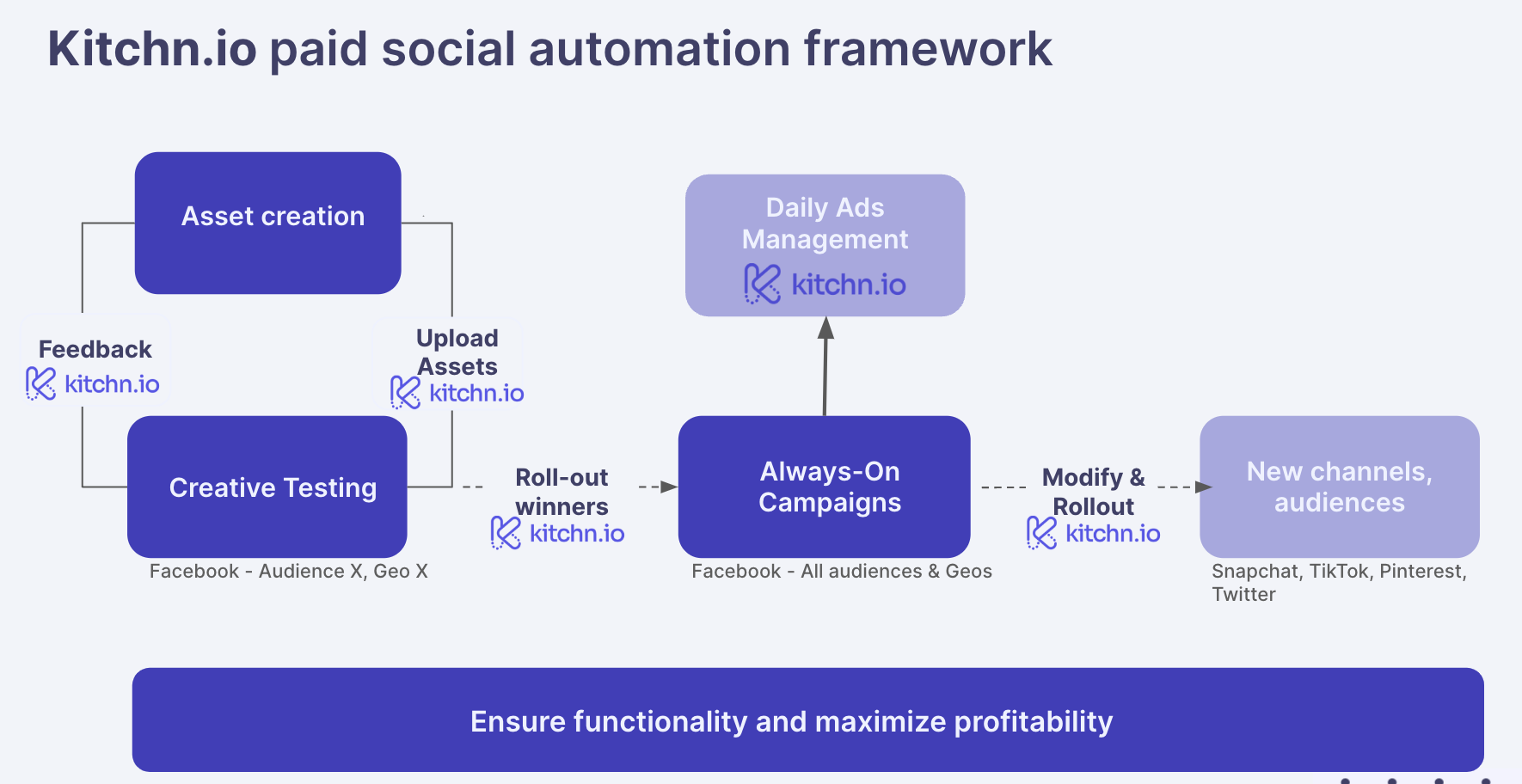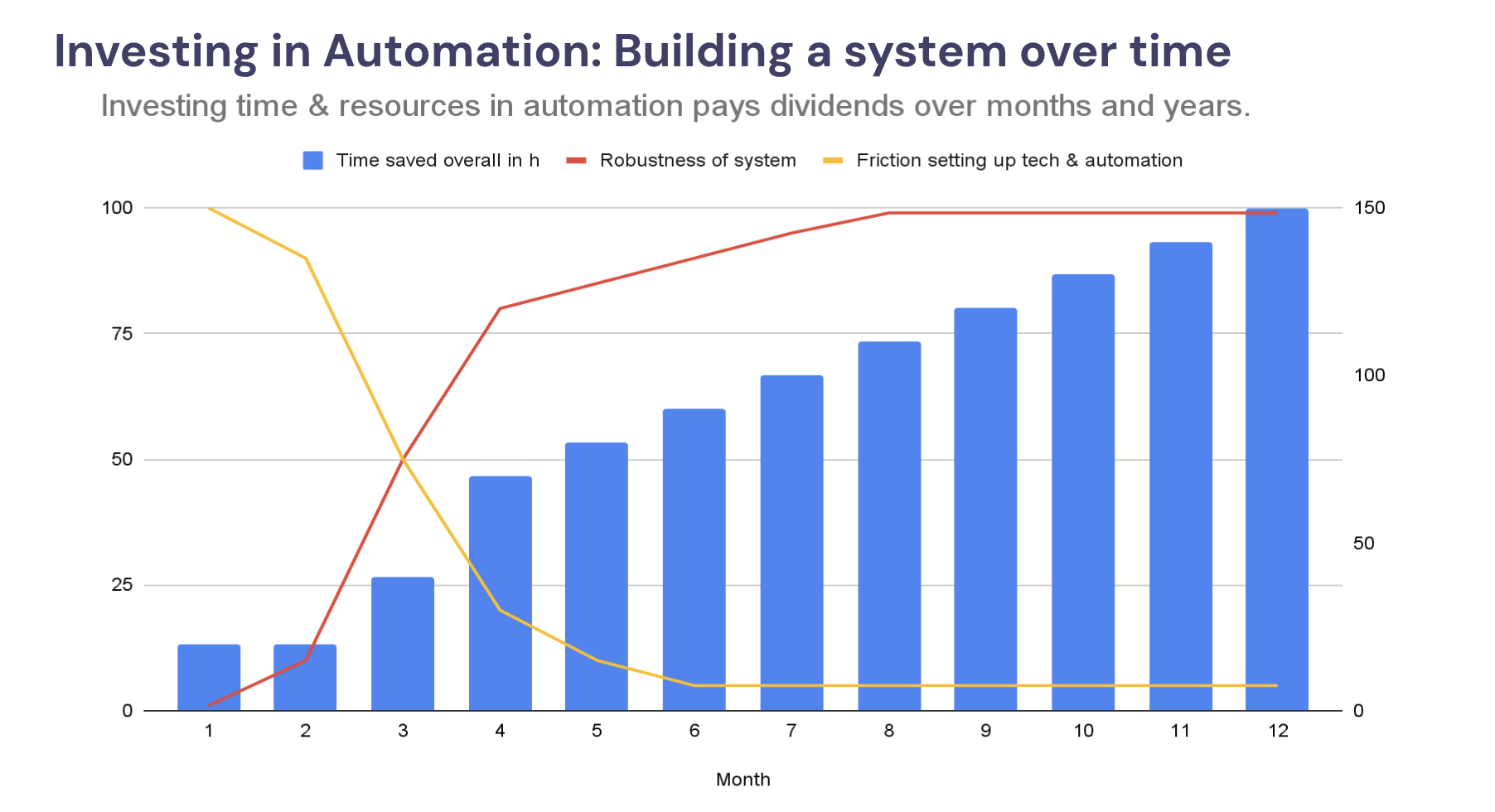Expert Opinions
Why is automation especially valuable for paid social agencies?
Paid social agencies are operationally intensive businesses, making them ideal candidates for automation. This interview with Simon Kreienbaum, co-founder of Kitchn.io, describes why automation is especially valuable for agencies.
In this blog, we are discussing why automation is particularly interesting for paid social agencies with one of the co-founders of Kitchn.io, Simon Kreienbaum. We will dive into the daily operations of paid social agencies, and explore why they constitute a significant part of Kitchn.io's clients.
We will also define the key factors that drive successful automation implementation and understand how to assess the return on investment when considering implementing automation for your team.
Paid Social Agencies are often clients of Kitchn.io
Q: It seems that a lot of Kitchn.io clients are performance marketing/paid social agencies. Can you explain why automation is so interesting for them?
A: Initially, we built Kitchn.io with the expectation that it would be most useful to in-house teams— agile startups with tech-driven teams that prioritize efficiency. We quickly realized that while these startups valued return on investment and readily adapted to new technologies to gain an edge over competitors, their approach was not necessarily process-driven.
In contrast, agencies, particularly paid social agencies, are extremely process-focused. They often hire junior marketers and recent graduates, aiming to deliver consistent and reliable results to their clients without too much volatility. Unlike startups that constantly experiment with new strategies, agencies prefer methods that are tried and tested. They prioritize processes that enable them to deliver predictable outcomes across different clients.
Structured Processes in the paid social agencies
Q: Is a focus on structured processes a mandatory attribute of successful agencies?
A: Process and structure are key. Successful agencies need a repeatable playbook that continues to function effectively even when key personnel leave or are temporarily unavailable. To scale and manage multiple accounts, it's essential that they can replicate their success formula consistently.
A great agency usually has a well-defined process and a narrow client selection—they focus on one business model or industry, master it, and then branch out to another. It's unrealistic to expect a small agency to excel in everything, just as a restaurant that offers every type of cuisine will struggle to deliver a Michelin-star experience.

Challenges when implementing paid social automation
Q: What challenges might agencies face when implementing automation?
A: The first hurdle is the overestimation of how formalized their processes are. It's common for agencies to believe they've clearly defined every step, when in reality, many employees aren't using the new systems, processes, or tools.
The second challenge is the understanding of what automation really means. At Kitchn.io, we focus on logical, rule-based automation. We aim to replicate the manual steps that agencies take and build automated flows around them. However, some people mistakenly view automation as some form of magic that can drastically improve performance without human intervention.
Paid Social Automation Solutions
Q: Given the numerous automation solutions currently on the market, how would you categorize them? Which solutions are best suited to which paid social teams?
A: I would categorize solutions based on the business model or industry being served. For e-commerce or other businesses reliant on a product feed, there are numerous tools available, such as Smartly, which focus on managing creatives at scale.
For agencies handling lead generation or affiliate marketing, where they don't have full access to the data set, tools that focus on data attribution or automated rules, such as Hyros and Revealbot, can be valuable.
Finally, for in-house teams or agencies dealing with simpler e-commerce shops or apps, there are solutions that balance data attribution and rule automation, while also offering performance marketing functions. In all cases, Kitchn.io can play a role in simplifying and streamlining the process.
P.S. Learn more about paid social automation solution in this podcast with Simon.
Prioritization in paid social automation
Q: When it comes to automation, different companies obviously have different processes and priorities. How do you determine what gets automated first? Is it based on the significance of the process within the company? Or is there another method of evaluating where automation is needed most?
A: In my experience, there are two primary ways to think about this. One approach is driven by the potential for automation or technology to have a significant impact on your bottom line. If automation can help you manage larger budgets, scale up accounts, or drive greater efficiencies across campaigns, then these are the metrics that need to be focused on.
If you're a lead gen agency that gets paid per lead, for example, the primary metric to look at is whether you can decrease the cost per lead or increase the number of clients you work with, thus boosting revenue and profit.
However, this approach is more like making an educated guess because it's challenging to predict the actual impact. But there are clear-cut projects where, if successful, they would enable significant new business operations.
On the other hand, a more conservative and commonly used method is to look at existing processes and analyze where the most time is spent. These are typically processes that don't add value or require domain expertise - the ones that work exactly the same way, no matter who the client is.
In such cases, if a process is repeatedly performed by many people, and it takes up a considerable chunk of time each week, it's very likely to be a meaningful opportunity for automation.
How to evaluate the ROI of paid social automation
Q: Let's delve into the economics of automation, particularly within paid social agencies. Automation usually comes at a certain cost. So how do you evaluate the return on investment when implementing automation, especially given the challenges some face in convincing co-founders, CFOs, and leadership teams that the investment in automation will be worth it in the long run?
A: The most conservative way to calculate ROI on automation is by looking at the time saved and the average hourly rate of a media buyer. This gives you a break-even point. If you can calculate this and it equates to or is less than the cost of the automation software or tool, it's usually an easy decision to implement the automation.
To give an example, let's say you have a solution that costs $3,000 per month, and you pay your media buyers around $30 an hour. This gives you a budget of 100 hours available to save through automation. If you have five people working, you aim to save 20 hours per month per person or about five hours per week. If you can achieve this, you've hit a break-even point or even made a small profit.

However, this is only the starting point. The key question is what do people do with those saved five hours? As an agency, you might be able to handle more ad accounts without having to hire more people, thus saving on future salaries and recruitment costs.
Plus, it's important to remember that automation doesn't make the random errors that humans do, reducing mistakes in bidding which often come as an opportunity cost.
Moreover, morale is usually dependent on the type of work your team does. If media buyers are stuck doing monotonous, manual tasks, they might leave, resulting in replacement costs. But if they can spend their time on creative or strategic tasks, it can boost their job satisfaction, reduce churn, and potentially improve performance overall.
While this is harder to measure, it's where the most significant benefit often lies. If your media buyers can use their extra time to improve the overall account or deliver better client impressions, it can extend client retention, which has a profound effect on business value. In the end, if you can find a break-even case in terms of hours saved, the real benefit is likely two to five times larger, taking into account all the added benefits that people don't usually consider.


